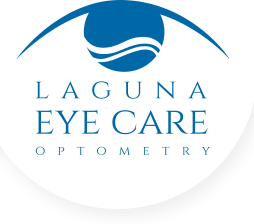Glaucoma
What is Glaucoma?
Glaucoma is a group of eye diseases characterised by the damage of the optic nerve due to increased internal eye pressure.
Risk factors for Glaucoma
Anyone can develop glaucoma, but there are many risk factors that can increase your chances:
- Age: If you are older than age 60
- Ethnic background: Mexican Americans, Asian, African or Afro-Caribbean origins
- Family history of glaucoma: If you have a family member with glaucoma
- Medical condition: Diabetes, high or low blood pressure and short-sightedness
- Increased intraocular pressure (IOP)
- Thinness of the cornea (out layer of tissue)
- Abnormal optic nerve anatomy
Treatment of Glaucoma
The goal of glaucoma treatment is to decrease the pressure in the eyes. This is achieved using special eye-drops or medications. Surgery is recommended if medications don't yield the desired result, or with an aim to prevent further vision loss or blindness. Depending on your particular condition, surgical options include:
- YAG Laser: A YAG targets specific cells in the trabecular meshwork by using a powerful beam of light directed into your eye. This treatment eases the outflow of fluid from the eye, thereby reducing the pressure inside the eye.
- Peripheral Iridotomy: This procedure is used for a relatively less common type of glaucoma called closed angle glaucoma that causes a sudden buildup of pressure in the eyes, which can lead to an irreversible loss of side and central vision. During iridotomy, the laser creates a small hole in the outer region of the iris (coloured part of the eye). This allows free circulation of fluid in the eye, thereby lowering the eye pressure.
- SLT (Selective Laser Trabeculoplasty): SLT is employed in the most common type of glaucoma called open-angle glaucoma that develops slowly over time. During SLT, the frequency of the laser beam is varied to target specific cells of the trabecular meshwork. This procedure opens up the clogged areas in the mesh work, making it easier for the fluid to flow out of the eye.
- Trabeculectomy with or without antibiotics with releasable sutures: Trabeculectomy is a commonly employed surgical procedure that relieves pressure in the eye caused due to glaucoma. It involves creation of a new drainage channel that allows the fluid to drain out of the eye leading to the formation of a bleb covered by a white outer covering (conjunctiva) of the eye. The drainage site may scar over time leading to its closure. This scar formation can be prevented with the help of antimetabolites, which act by inhibiting the multiplication of cells forming the scar tissue.
- Express Shunt: This is a simplified version of trabeculectomy. This procedure uses an extremely small tube to divert the fluid to the outside of the eye. As only controlled and precise amounts of fluid are let out, the internal pressure of the eye stands maintained at a healthy level.
If you have been suffering from complex eye ailments, and are still undecided about the treatment, talk to our specialists at NMC Eyecare to review your options with you.
Prevention of Glaucoma
Regular eye check-ups can help detect glaucoma in its early stage and prevent irreversible damage. As a rule of thumb, get your eyes tested every three to five years after the age of 40 and every year after 60. You should also protect your eyes while playing contact sports and spending time outdoors as serious eye injuries can lead to glaucoma.
